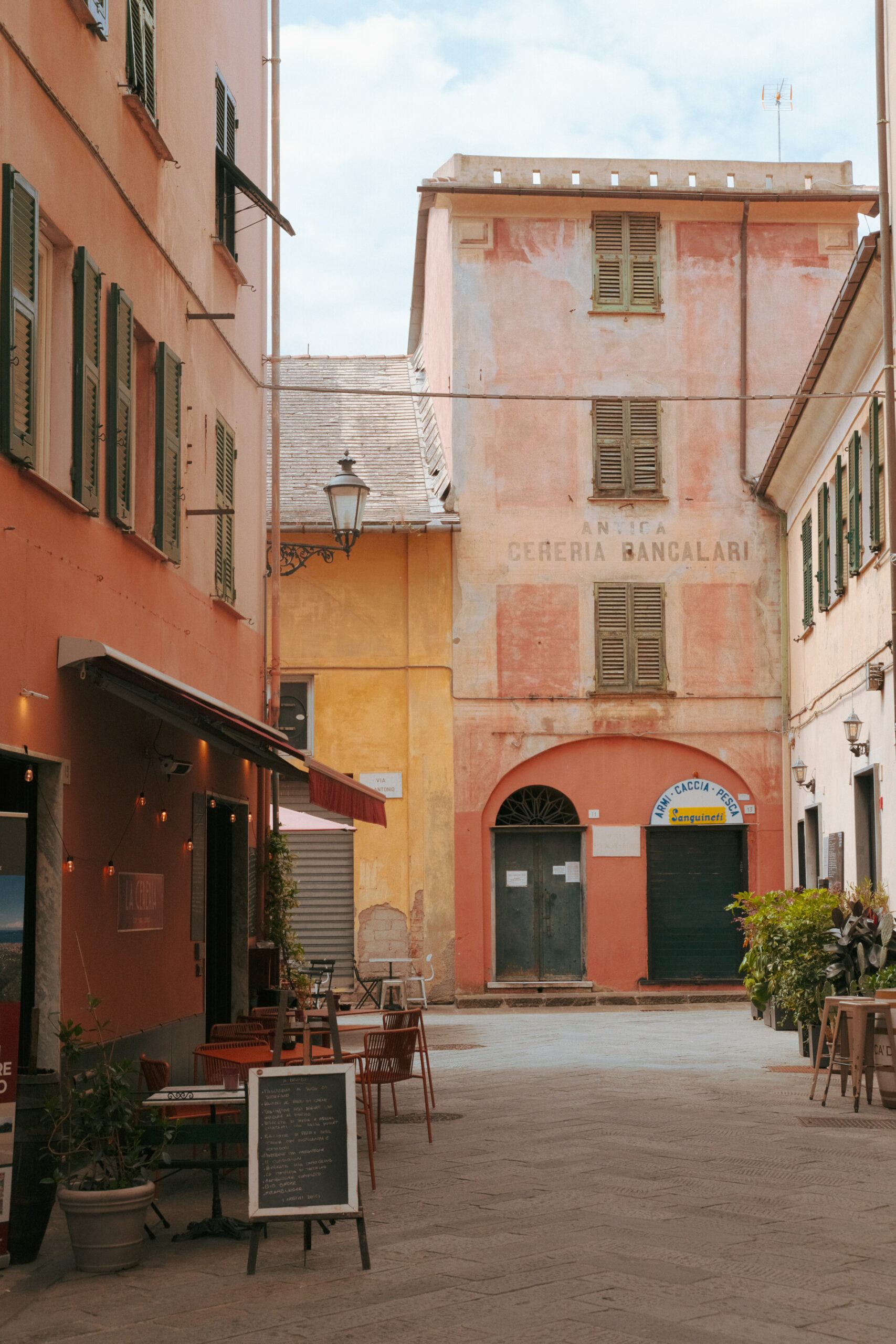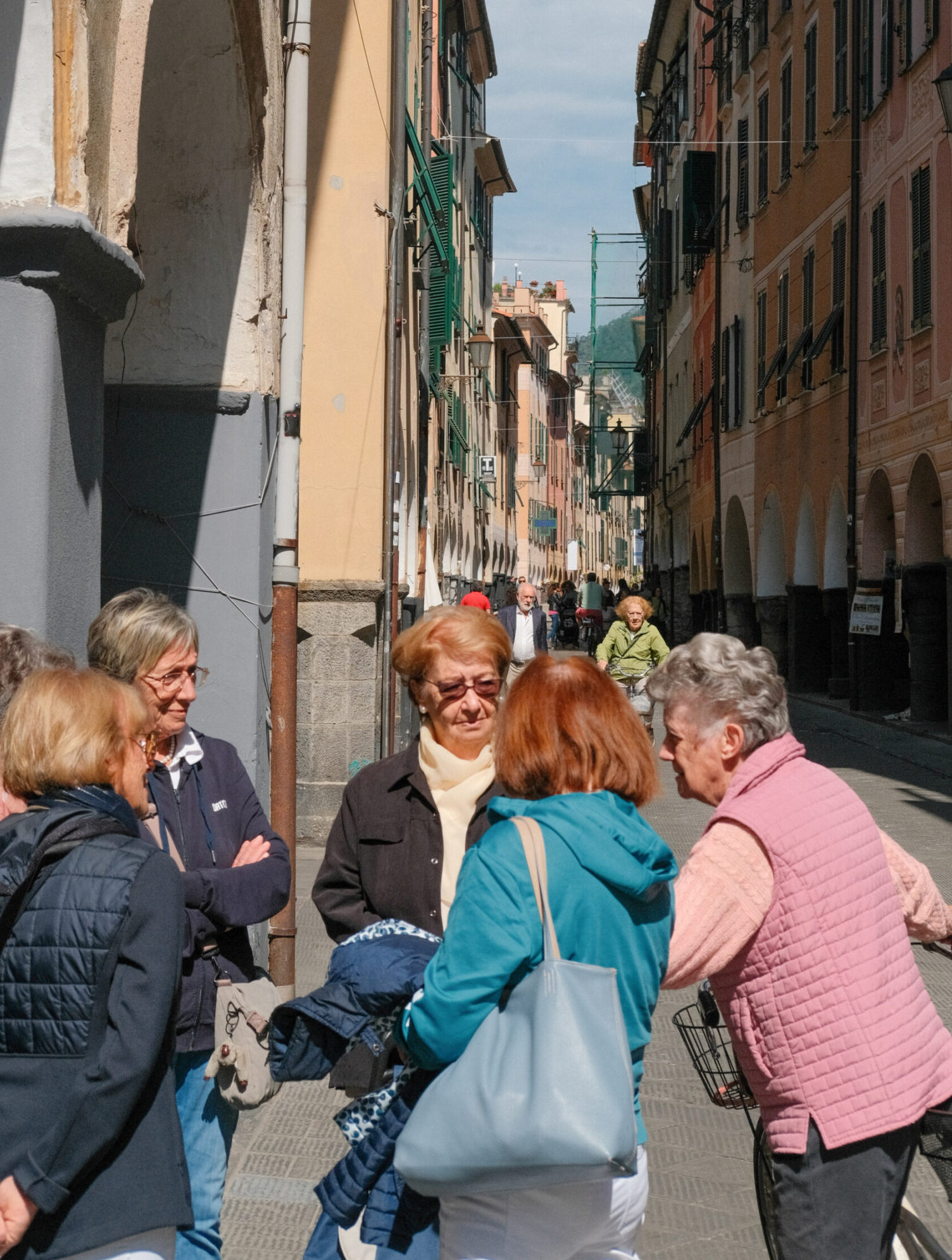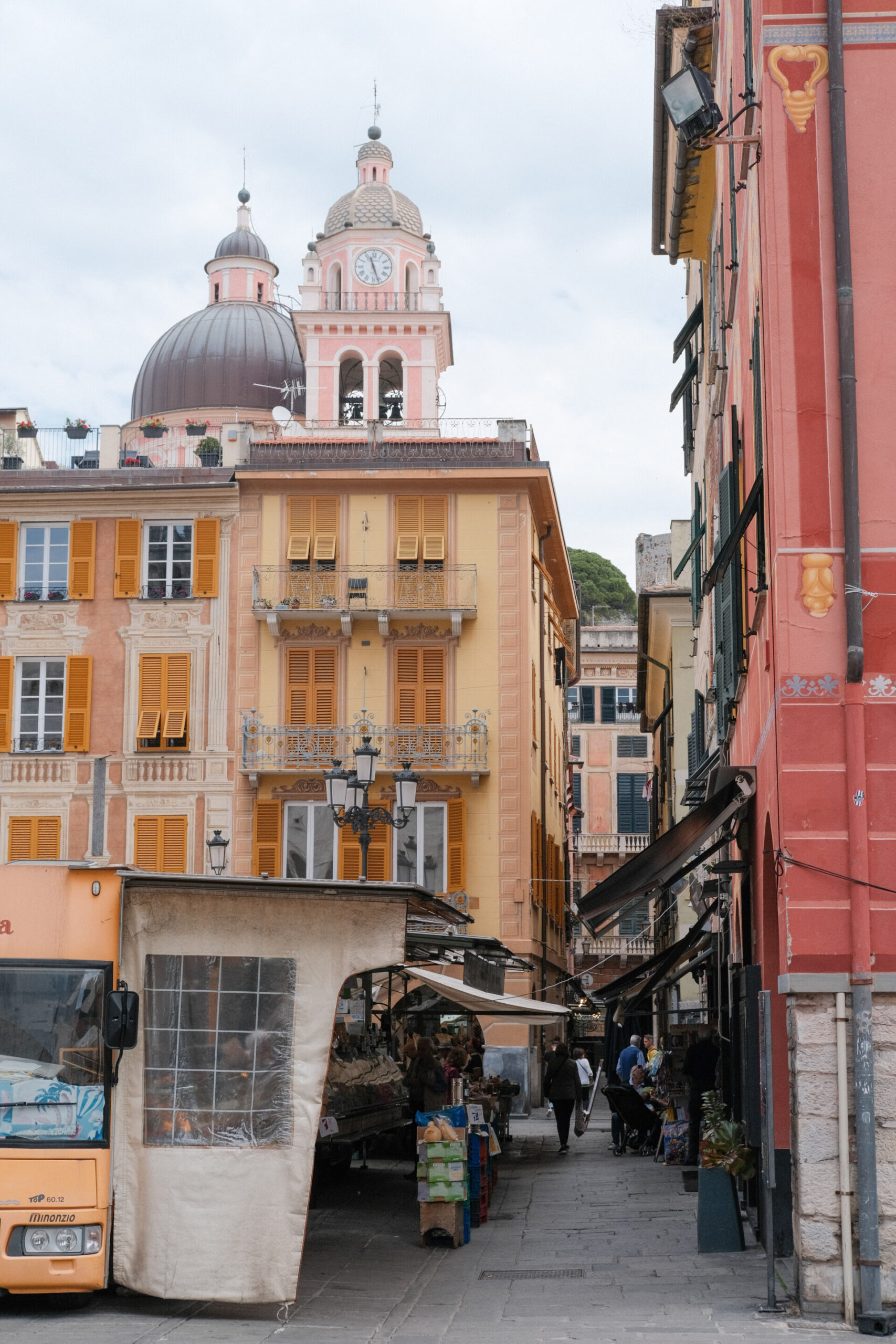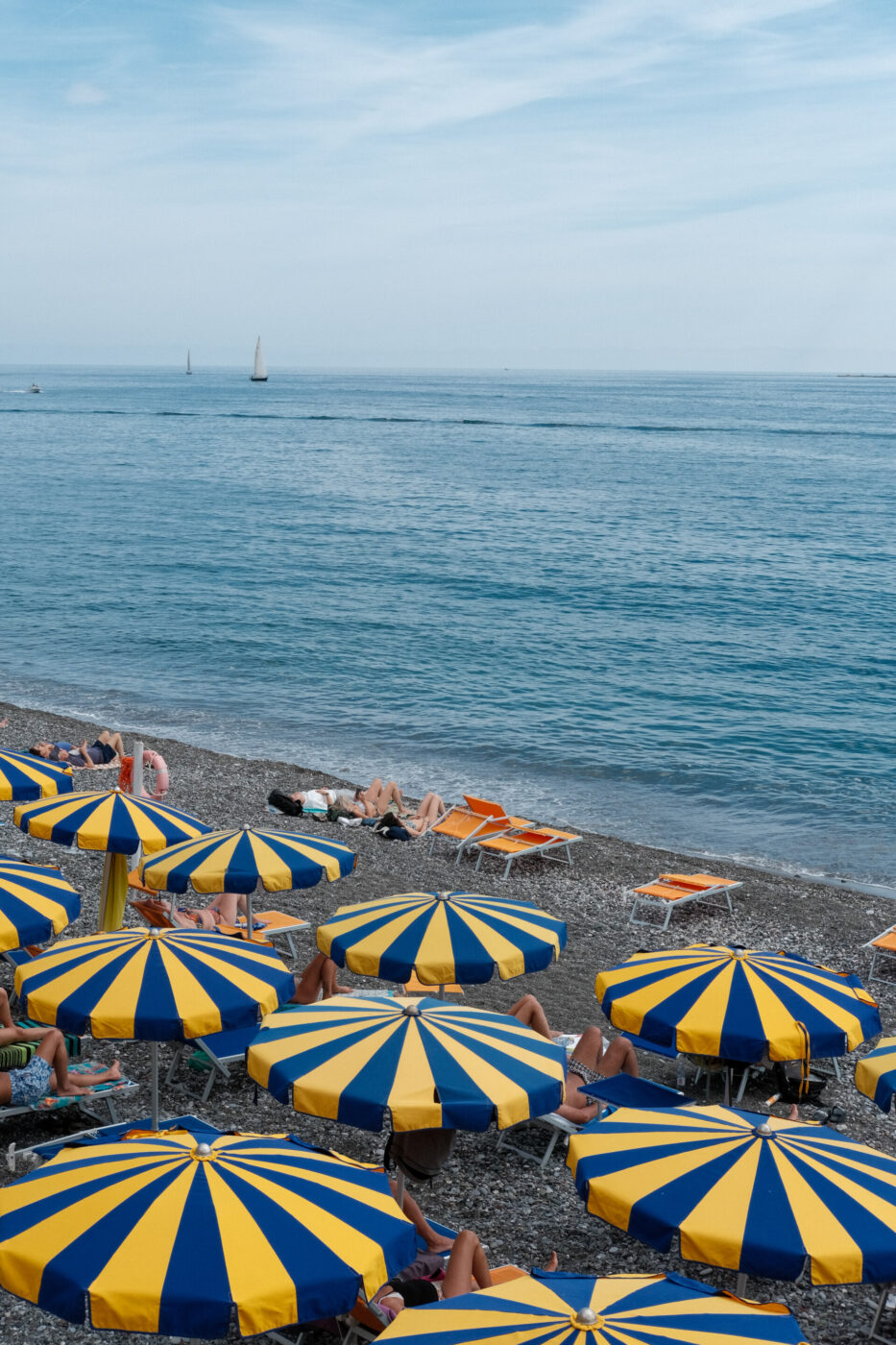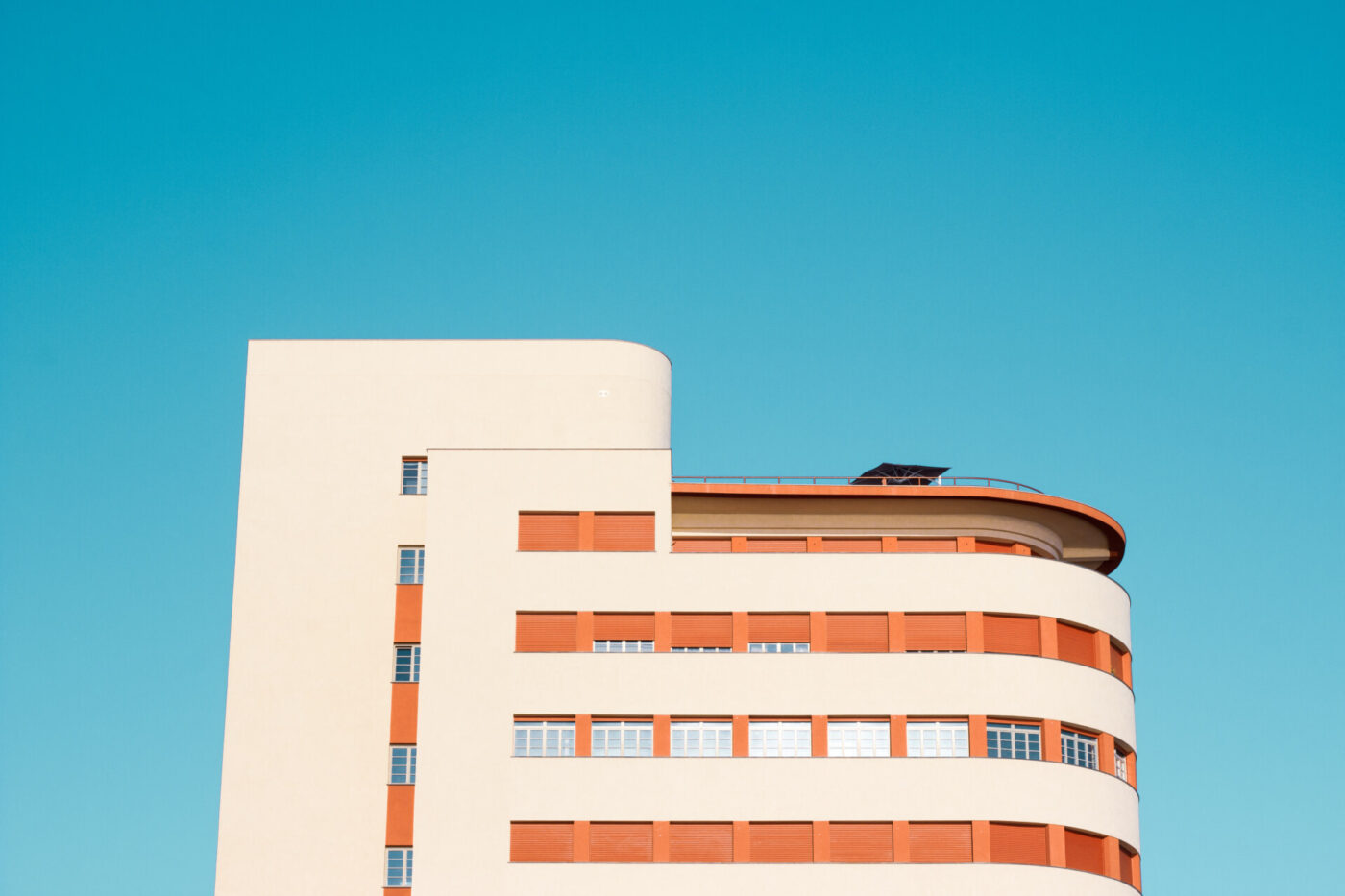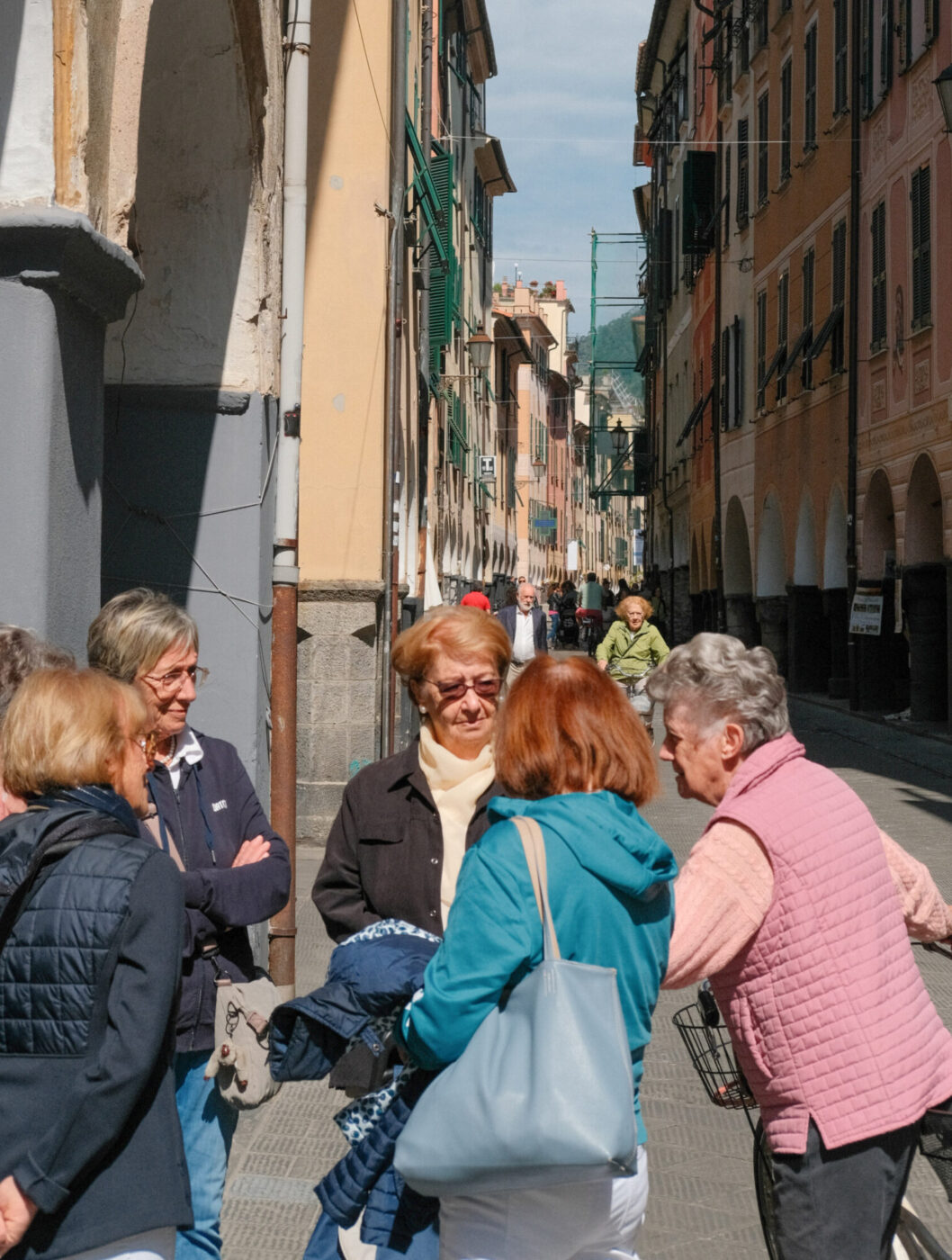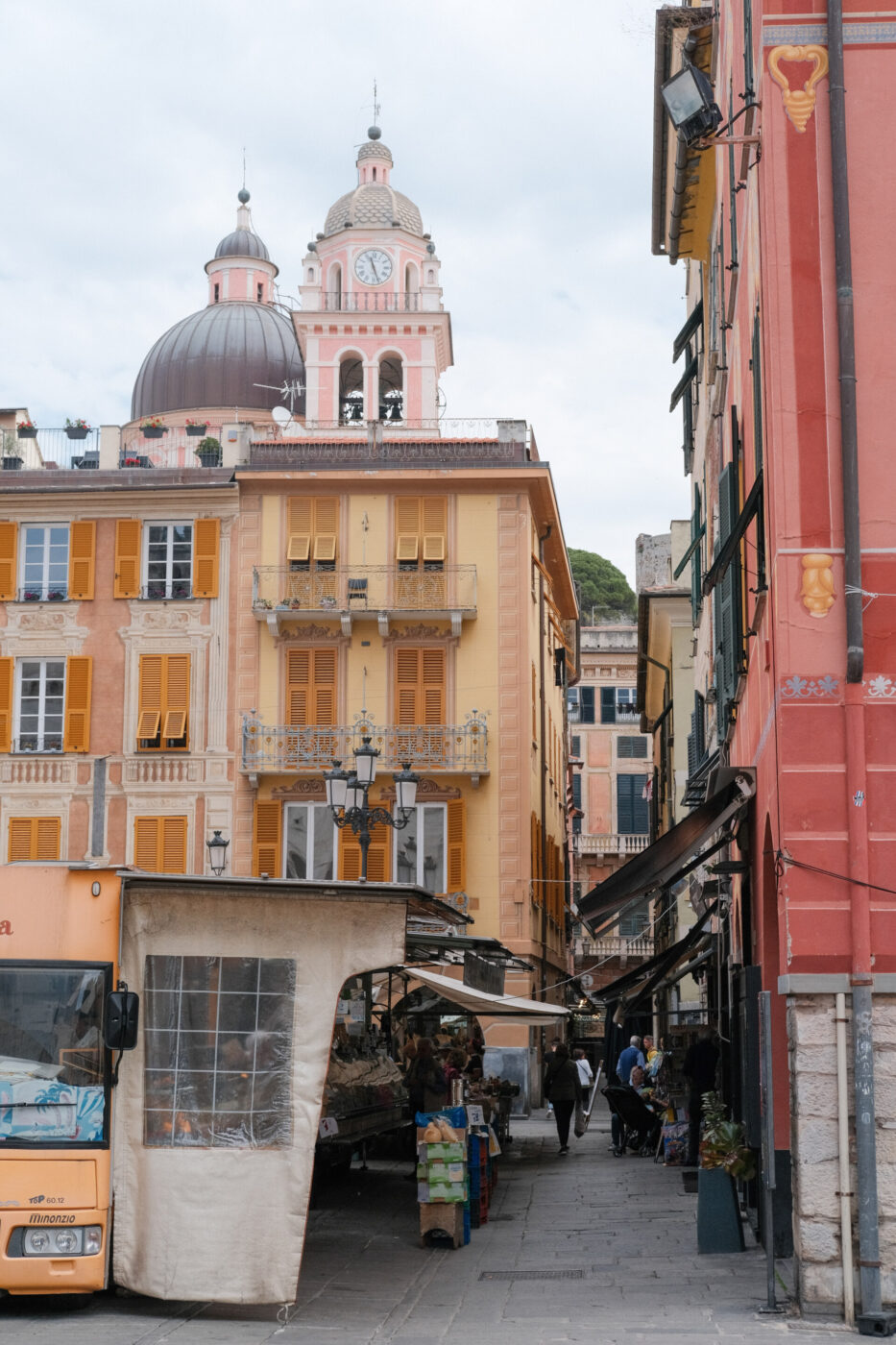It’s easy for beach bumming enthusiasts to forget that 1.5 million people reside on the Italian Riviera–that’s nearly half the total visitors that touch down on just the Cinque Terre each year. Yes, several small Ligurian towns hibernate come winter. But there are also cities like postcard-perfect Chiavari, with a population that exceeds 27,000, that don’t fall asleep once the umbrellas and sun loungers have been dismantled. Situated halfway between Genova and Cinque Terre, Chiavari is a perfect jumping point for exploring Liguria’s heavily trodden destinations like the said “Five Towns” and Portofino–but it also warrants your time and attention.
Though it bears evidence of pre-Roman civilization, Chiavari as we know it was born as Tigullia, a Roman coastal town on the Tigullio Gulf. It has evolved over the millennia, preserving its past nearly every step of the way, from a 12th-century castle presiding over the town from its hilltop perch to a surprisingly extensive network of Medieval arcades to spectacular Art Nouveau mansions ripe for a big-screen cameo. Chiavari is so much more than its seafront and deserves a slot on the Liguria bucket list of every traveler–year-round, as it’s just as pleasant (perhaps even more so?) when the mercury drops.
Getting there and getting around
Chiavari lies on a stretch of the Riviera Levante halfway between Genova and Cinque Terre. The Intercity train from Milano Centrale stops there, and it’s easily reachable by car. Parking spots aren’t few and far between, and the town itself is best traversed on foot. The closest airport is Genova.
What to do in Chiavari
Chiavari Castle – The 12th-century structure was rebuilt in the 14th century following its destruction during various conquerings over the years. It’s been privately owned since 1993, so visitors can’t go inside. It’s just under ten minutes on foot from the old town and is worth the ascent for the sweeping panoramas of the gulf.
The Old Town – Chiavari’s colorful medieval old town packs a sprawled, tidy grid of caruggi, or narrow lanes, edged with porticoed 13th-century buildings whose varied arcades may comprise slate gray cement columns beneath apricot-hued trompe-l’œils, gray square cement bases footing a peach paint-peeled facade, and stone pillars bolstering a lime exterior. The storefronts lodge eateries, bars, fruit and vegetable vendors, and myriad shops, from well-known chains like Calzedonia to one-offs, such as Kirù Boutique 28, a high-end clothing shop for men and women, to an outpost of Genova’s Andrea Morando, a menswear and womenswear designer who sells his own line along with some other small luxury brands. The columned neoclassical structure on the fringes resembling Rome’s Pantheon isn’t a courthouse or a bank–it’s the Cattedrale di Nostra Signora dell’Orto, or the Cathedral of Our Lady of the Garden, the seat of the city’s diocese.
Liberty Architecture – Spectacular Liberty, or Italian Art Nouveau, villas frame the western edge of the broad, palm-lined Viale Enrico Millo and its side streets. The architectural style, which peaked from 1890 to 1914, mingles ornate Baroque lavishness with symmetry, colors, neat lines, and curves. Keep your camera handy as you stroll–especially when you pass numbers 58 and 68.
Palazzo Rocca – The grand 17th-century palazzo houses an archeological museum exhibiting artifacts from an early Iron Age burial ground excavated during the 20th century. Italian, Spanish, and Flemish artworks, varied ceramics and objects, and an antique stamp collection are also on view, and the lush botanical garden blooms with a fragrant fantasia of flowers and exotic plants.
Beaches – The town’s two-kilometer crystalline coastline, protected by breakwaters, mixes pebbles and sand. Beach clubs intersperse patches of public beaches–book your sun loungers and umbrella in advance if you take the private route.
Antiques Market – If you’re in town the second weekend of the month, don’t miss the antiques market. More than 150 vendors set up shop in and around Via Martiri della Liberazione in the old town, selling everything from furniture and objects to jewelry and trinkets to stamps and books.
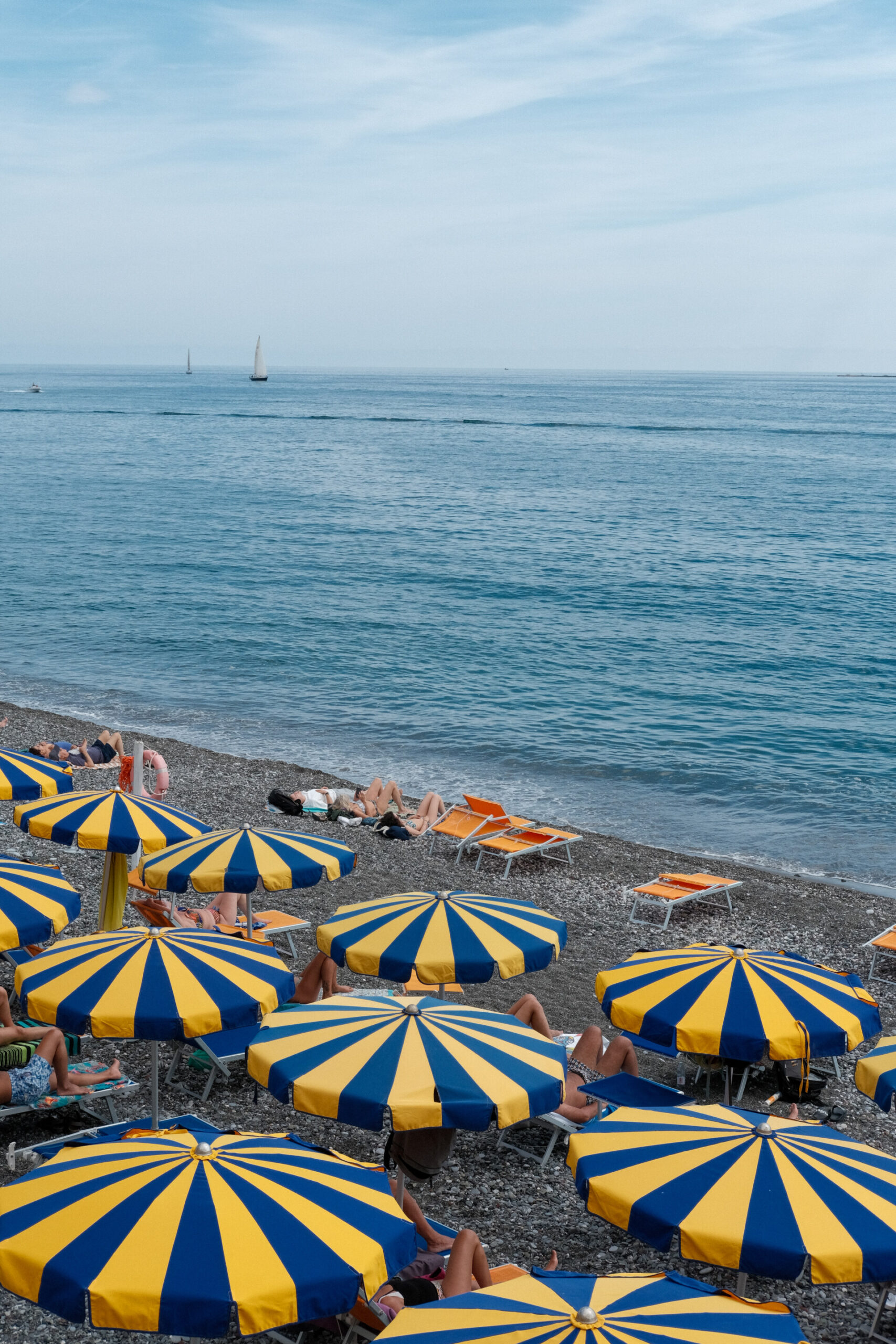
Where to eat and drink in Chiavari
Focaccia is required for Ligurian eating, and Raffo bakes some of the town’s finest–crispy on the outside, fluffy on the inside, finished with an olive oil glaze and a salt sprinkling. Drop in Friday and Saturday morning for their sweet version. Antico Forno’s focaccia is also perfectly pillowy, and while you’re there, pick up some of the irresistible apple fritters.
Osteria Luchin hits the spot for traditional Ligurian fare. Start with the farinata, a chickpea pancake that arrives on the table piping hot with a soft, mushy interior. Trofie al pesto is a Ligurian classic, as is the lesser-known ravioli al tocco filled with meat (usually veal and its innards), endive, and borage. The pasta is finished with a Genovese sauce–tocco in dialect–made from beef that boils for ages.
For a meal that skews on the creative, try Duo for playful riffs on classics like pansotti filled with local prescinsêua cheese and herbs in “no”ci, an anchovy-based concoction with the same consistency of the walnut (noci) sauce that traditionally coats the pasta.
Get your morning caffeine fix at the dramatic bar inside the 100-year-old Gran Caffè Defilla, Liguria’s largest cafe. The spot undoubtedly evokes the grandeur of its post-World War II heyday when celebrities, politicians, and luminaries filled the tables. Or drop by in the afternoon for a post-lunch caffè or cold caffè shakerato. Pick up some sorrisi di Chiavari (smiles from Chiavari), wrapped chocolates filled with maraschino liqueur first made onsite in the 1960s.
Prosciutto dangles from the ceilings at The Best, which sells hundreds of cheese, salami, and cured meats and is marked by a “Bottega del Formaggio” sign. Its sister establishment, The Best Drink, is an excellent aperitivo spot, as is La Cereria for clever cocktails like the Kill Bill with white rum, honey, lime, mint, and pineapple soda. For a pre- or post-dinner glass of wine, head to Vinoria Bar Bottiglieria and Vinoteca Chiavari.

Further afoot
As it’s only partially on the tourism radar, Chiavari is an ideal jumping off point for further exploring the Riviera Levante, the arm of Liguria that stretches from Genova to Tuscany. Portofino, San Fruttuoso, and Santa Margherita are visible from the shoreline, and lines 1 and 2 of the local ferry service stop at these destinations. The line 5 ferry heads west toward Cinque Terre and docks in Monterosso and Riomaggiore.
Where to sleep in Chiavari
Grand Hotel Torre Fara – One of the coastline’s most distinct sights is the curved Rationalist-style tower protruding from a low, wide structure. Mussolini inaugurated Colonia Fara, a Fascist-era kids’ summer camp in 1938. It took on various roles post-war but was abandoned in the 1980s. Today, it’s a four-star beachfront hotel that opened in 2022 with 31 rooms, two suites, and a spa and wellness center.
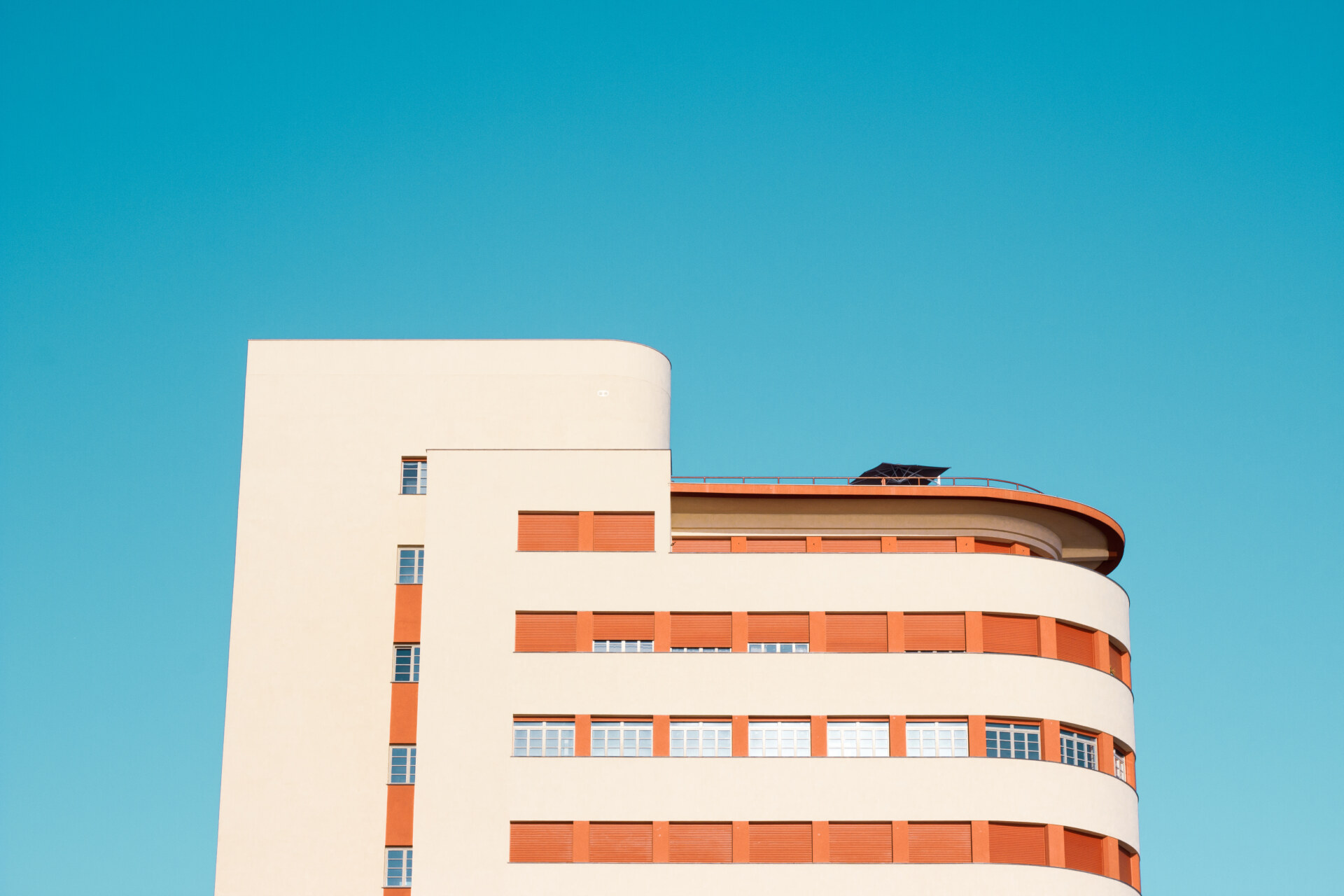
Grand Hotel Torre Fara; Photography by Alex Mockensturm
